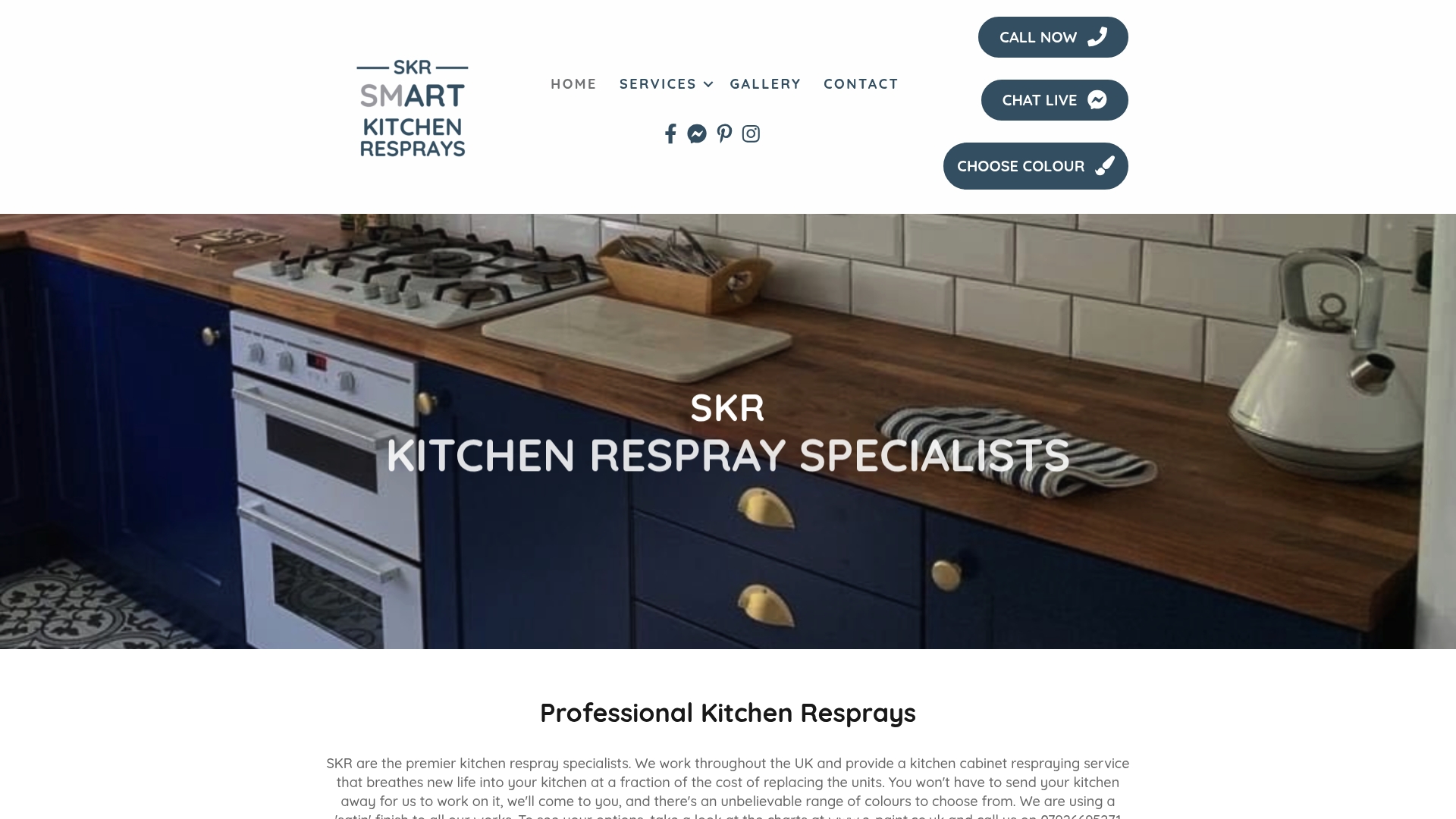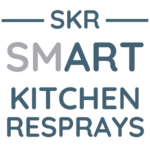Kitchen Painting vs Spraying: Complete Guide UK
Did you know that a professionally sprayed kitchen can be finished up to 70 percent faster than traditional hand painting? Many homeowners want to refresh their kitchen units and face a big decision between these two popular techniques. The choice you make impacts not only how your kitchen looks but also the time, cost, and results you can expect for years to come.
Table of Contents
- Kitchen Painting Vs Spraying Explained
- Traditional Painting Versus Modern Spraying Methods
- Results, Durability And Finish Compared
- Cost, Time And Disruption Considerations
- Common Mistakes And How To Avoid Them
Key Takeaways
| Point | Details |
|---|---|
| Traditional vs. Spraying | Traditional painting offers control but results in visible imperfections, while professional spraying ensures a smooth, uniform finish. |
| Time and Disruption | Professional spraying is more efficient, minimizing project timelines and household disruption compared to traditional painting’s labor-intensive methods. |
| Skill and Technique | High skill is necessary for traditional painting, whereas professional spraying requires specific technique, reducing the risk of common mistakes. |
| Cost Considerations | Although professional spraying may have higher upfront costs, the efficiency and quality often justify the investment for long-term durability and appearance. |
Kitchen Painting vs Spraying Explained
When it comes to refreshing kitchen units, homeowners face two primary approaches: traditional painting and professional kitchen spraying. Understanding the key differences can help you make an informed decision about your kitchen renovation project.
Traditional kitchen painting involves manually applying paint using brushes, rollers, and careful brushstrokes. This method allows for hands-on control but often results in visible brush marks, longer application times, and potentially uneven coverage. According to research on painting techniques, manual painting can take significantly longer and requires more preparation.
Kitchen spraying, by contrast, offers a smooth, factory-like finish with minimal effort. Professional sprayers use specialized equipment to apply an even coat of paint across kitchen units, creating a seamless and uniform appearance.
As the guide to kitchen renovation paint techniques suggests, spraying provides several advantages:
- Faster application time
- More uniform paint distribution
- Smoother final finish
- Less manual labour required
- Ability to cover complex surfaces and detailed unit designs
According to the Health and Safety Executive (HSE), both painting methods require proper ventilation and protective equipment to minimise potential health risks during application.
Traditional Painting Versus Modern Spraying Methods
Kitchen renovation techniques have dramatically evolved, with traditional painting methods now competing against more advanced spraying technologies. While manual painting techniques have long been the standard approach, modern spraying methods are quickly transforming how homeowners refresh their kitchen spaces.
Traditional painting techniques involve manual application using brushes and rollers, a method that has been used for generations. According to the best paint comparison guide, these conventional methods require significant skill and patience. As research from the University of the Arts London suggests, traditional painting methods demand precise brush control and understanding of material interactions.
Modern spraying methods, by contrast, represent a technological leap in kitchen renovation. Professional spraying techniques offer several substantial advantages:
- Faster application process
- More uniform paint coverage
- Minimal brush marks or imperfections
- Ability to coat complex surfaces evenly
- Reduced manual labour requirements
The City & Guilds London Art School highlights that contemporary painting techniques increasingly integrate technological innovations, with spray painting representing a prime example of this evolution in surface treatment and refinement.
Results, Durability And Finish Compared
When evaluating kitchen renovation techniques, the final results, durability, and overall finish are crucial considerations that can significantly impact the longevity and aesthetic appeal of your kitchen units. Traditional painting and modern spraying methods each offer unique outcomes that homeowners must carefully assess.
Traditional painting typically produces variable results, with finish quality heavily dependent on the painter’s skill and technique. Brush marks, uneven coverage, and potential imperfections are common challenges. According to the Health and Safety Executive, the application method directly influences the paint’s long-term performance and durability.
In contrast, professional spraying delivers consistently superior results. The best spray paints guide highlights the key advantages of spray application:
- Factory-like smooth finish
- More even and uniform paint distribution
- Enhanced durability and resistance to chipping
- Seamless coverage on complex surfaces
- Longer-lasting paint job with minimal visible imperfections
Professional spraying techniques create a protective layer that not only looks aesthetically pleasing but also provides superior protection against daily wear and tear, moisture, and kitchen-related environmental challenges.
Here’s a comparison of traditional kitchen painting and professional kitchen spraying:
| Aspect | Traditional Painting | Professional Spraying |
|---|---|---|
| Application Method | Brushes & rollers | Spray gun equipment |
| Finish Quality | Brush marks Variable coverage |
Smooth Uniform coverage |
| Time Required | Longer Labour-intensive |
Shorter Efficient |
| Skill Level Needed | High Manual skill essential |
Professional technique preferred |
| Durability | Varies by skill Prone to chipping |
Enhanced durability Better resistance |
| Cost | Lower material cost More labour |
Higher upfront Labour saving |
| Disruption | More preparation Longer disruption |
Minimal prep Quick turnaround |
| Suitability for Complex Designs | Difficult | Excellent |
Cost, Time And Disruption Considerations
Kitchen renovation projects require careful financial and logistical planning. Homeowners must weigh the immediate costs, time investment, and potential disruption to their daily lives when choosing between traditional painting and professional spraying techniques.
Traditional painting tends to be more labour-intensive and time-consuming. According to the Health and Safety Executive, manual painting methods involve multiple stages of preparation, including surface cleaning, sanding, priming, and multiple coats of paint. This approach can occupy your kitchen space for several days, potentially disrupting household routines and requiring significant personal time commitment.
In contrast, professional spraying offers a more streamlined and efficient solution. Modern spraying techniques dramatically reduce project timelines and minimize household disruption. Key advantages include:
- Significantly reduced application time
- Minimal preparation requirements
- Less manual intervention
- Faster drying and curing periods
- Reduced daily household interruption
While professional spraying might initially appear more expensive, the efficiency and quality of results often offset the upfront costs. The reduced labour time, minimal material waste, and superior finish make spraying an increasingly attractive option for homeowners seeking a cost-effective and high-quality kitchen renovation solution.
Common Mistakes And How To Avoid Them
Kitchen painting and spraying projects can quickly go wrong without proper preparation and technique. Understanding common pitfalls is crucial for achieving a professional-looking finish that stands the test of time.
In traditional painting, homeowners frequently make critical errors that compromise the final result. According to the Health and Safety Executive, inadequate surface preparation is a primary culprit. Common mistakes include:
- Skipping thorough surface cleaning
- Failing to sand surfaces properly
- Using incorrect primer for kitchen surfaces
- Applying paint in humid or extremely cold conditions
- Not allowing sufficient drying time between coats
Professional spraying requires its own set of precautions. While spraying offers superior results, amateur mistakes can lead to uneven coverage, drips, and poor adhesion. Proper ventilation, correct spray gun technique, and maintaining the right distance from the surface are essential for achieving a flawless finish.
To prevent costly errors, consider consulting expert painting guides and investing time in thorough preparation. Professionals recommend creating a clean, dust-free environment, using high-quality materials, and taking the time to understand the specific requirements of your kitchen’s surface materials.
Transform Your Kitchen the Smart Way
Thinking about updating your kitchen but worried about uneven brush marks, wasted days painting, or the hassle of traditional methods? You are not alone. Many homeowners find themselves frustrated by the slow process and imperfect results of standard painting when all they want is a durable, flawless finish that truly lasts. This is exactly where modern kitchen spraying can change everything, letting you skip the stress and enjoy results that stand the test of time. Discover expert advice, tips, and guides to making the right decision for your home by visiting our Uncategorized Archives for more insight.

Ready to see the difference for yourself? Choose a professional kitchen respray service that delivers a smooth finish quickly and with minimum disruption. Visit SKR Specialists now and let us turn your kitchen renovation goals into reality. Act today to unlock a kitchen you can feel proud of every time you walk in.
Frequently Asked Questions
What is the main difference between traditional kitchen painting and professional kitchen spraying?
Traditional kitchen painting uses brushes and rollers for manual application, often resulting in visible brush marks and uneven coverage. In contrast, professional kitchen spraying employs specialized equipment to achieve a smooth, factory-like finish with uniform paint distribution.
How does the durability of spray paint compare to traditional paint?
Spray paint generally offers enhanced durability and resistance to chipping compared to traditional paint. It creates a protective layer that withstands daily wear and environmental challenges better than manually applied paint does.
What are the cost implications of choosing between painting and spraying kitchens?
Traditional painting typically involves lower material costs but requires more labour and time, making the project more disruptive. Professional spraying may have a higher upfront cost but often saves time and labour, resulting in better overall value due to reduced waste and superior finishes.
What common mistakes should I avoid when painting or spraying my kitchen?
Common mistakes in traditional painting include inadequate surface preparation, improper primer use, and applying paint in unsuitable conditions. For spraying, avoid uneven coverage by maintaining the correct distance from the surface and ensuring proper ventilation. Proper preparation and technique are crucial for a successful finish.
